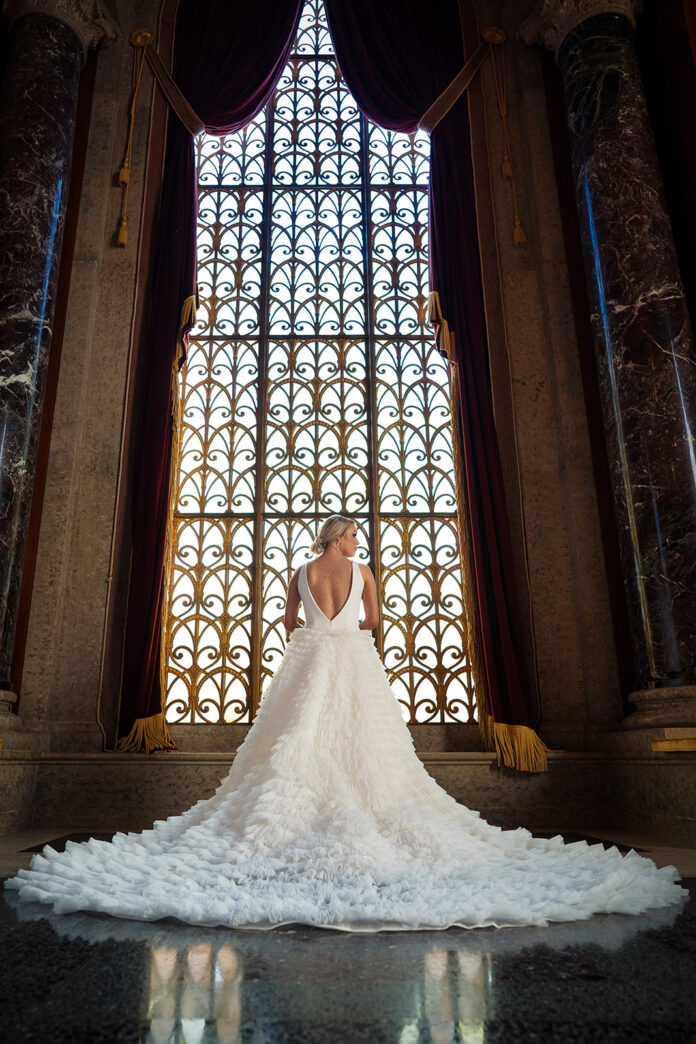
By Olivia Turner | Staff Writer
One of the most romantic places on campus is the Armstrong Browning Library and Museum, although not many are aware. For decades now, the air of love has lingered in the building from wedding ceremonies held in the Foyer of Meditation, one of the library’s most magnificent rooms, and many a knee has been taken in proposal on the stairs within. These stairs lead to two golden clasped hands — a symbol of Robert and Elizabeth Browning’s love, the mid-nineteenth century poets who were the inspiration for the library 72 years ago.
The Armstrong Browning Library was built under the instruction of the chair of the English department at the time, Dr. A. J. Armstrong, according to former director of the library Rita Patterson. A life-long admirer of poets Robert and Elizabeth Browning’s works, Armstrong amassed a sizable collection and wanted a place to house the poetry, Patterson said.
“By the time the building was constructed, he had gathered, they say, one of the largest Browning collections in the world,” Patterson said.
By the time Patterson became director of the library in 1971, she said weddings had become popular, especially in the Foyer of Meditation, which is home to several iconic references of the Brownings’ poetry, such as the Cloister of the Clasped Hands. Patterson said one of the Brownings’ friends who also happened to be a sculptor, Harriet Hosmer, often saw them lovingly holding hands, which inspired her to create the piece.
Several other references to their romantic poetry, such as bells and pomegranates within the chandelier, and inscriptions of the couple’s poetry on the walls to the left and right of the clasped hands, are displayed within the room. Armstrong had golden ombre stained glass windows put in to create the effect of eternal sunrise or sunset while in the room, events manager Rachel Bates said.
“It looks very cathedral-like,” Bates said. “It’s one of the special places on campus to get married, and a lot of couples that get married there want to relate Baylor in some way into their wedding because that’s where they usually met, or this was their favorite place to come to study while they were here.”
Bates, who helps to coordinate the weddings that happen in the library, said she has had brides who ask to be married under the arch containing the golden clasped hands, as well as under the golden light of the window. Both make for a glorious scene, she said.
Bates said with this regal wedding setting comes policies. In order to get married in the Armstrong Browning library, one of the people in the couple must be an enrolled Baylor student or graduate, a Baylor employee, the child of an employee or an Armstrong Browning Library patron, which requires donations to be made to the library. She also said the library is only allowed to host ceremonies, not receptions.
Rules like these have been in place as long as weddings in the library have been popular, and some were even stricter, according to Armstrong Browning bride Kathy Hillman. She said didn’t mind the policies, though.
“I love the Foyer of Meditation,” Hillman said. “It was just such a special location for me.”
Hillman, who was married in the library in December 1973, said in order for her to be married there, she had to pay homage to the Brownings’ poetry into her wedding. She incorporated Elizabeth’s “Sonnets from the Portuguese” into the music of the ceremony, a standard which is still relevant today. Hillman and her husband became library patrons, also known as “Guardian Angels,” in addition to being Baylor graduates.
She said she also had to take something called the Browning Course, a requirement which is no longer in place for couples. The Browning Course required its students to learn about the history of the Brownings, their poetry, their love story and be so well versed in the material they could lead a tour of the library on their own. Taking the course grew her admiration of the Brownings, as well as for Armstrong and his wife, she said. Hillman said she encourages unmarried couples with similar fascination to consider Armstrong Browning for their weddings.
“I believe that if they have especially a love and appreciation for the building and nineteenth century literature and the Brownings and the university, that it’s the perfect place,” Hillman said.
Within the Browning Course, students learned about the love story of the Brownings — one of forbidden love and happy endings, according to Patterson. The Brownings did not marry until Elizabeth was 40 and Robert was 34, due to the controlling nature of Elizabeth’s father, so the couple fostered their love their letters containing poems. Months after the letters began, the English couple married and moved to Italy, residing there happily for the rest of their married lives.
“Grow old along with me, the best is yet to be,” one of Robert’s most famous poetic lines, seems to be a dream-become-reality for him.
Perhaps it is because words like these are etched on the lofty walls of Browning Armstrong Library that the building continues to be Baylor’s birthplace for marriages again and again.





